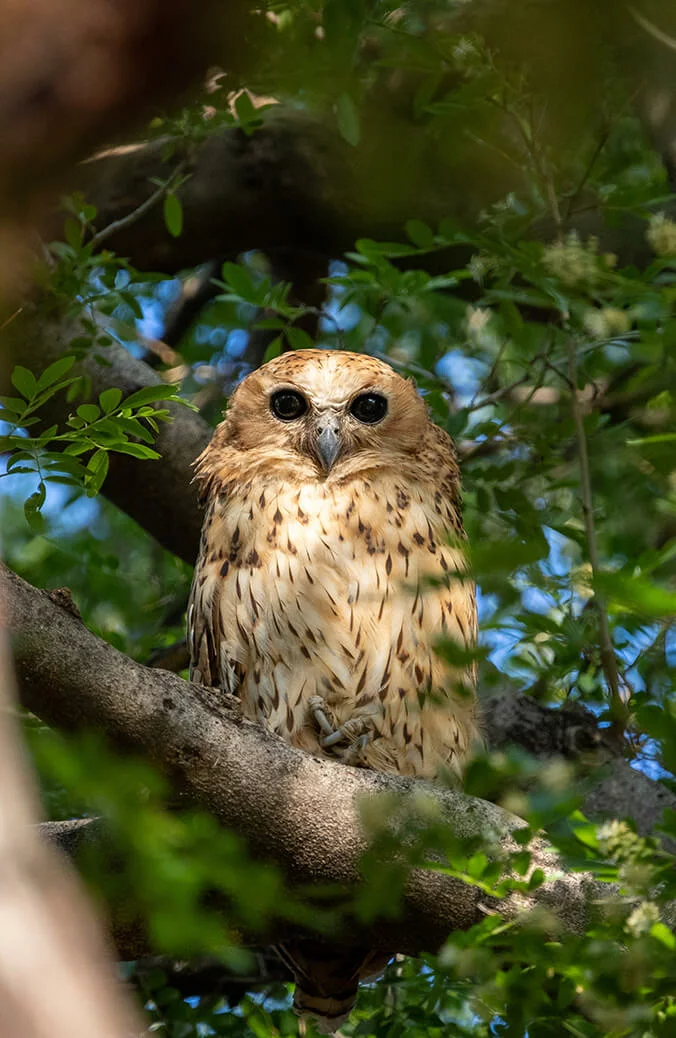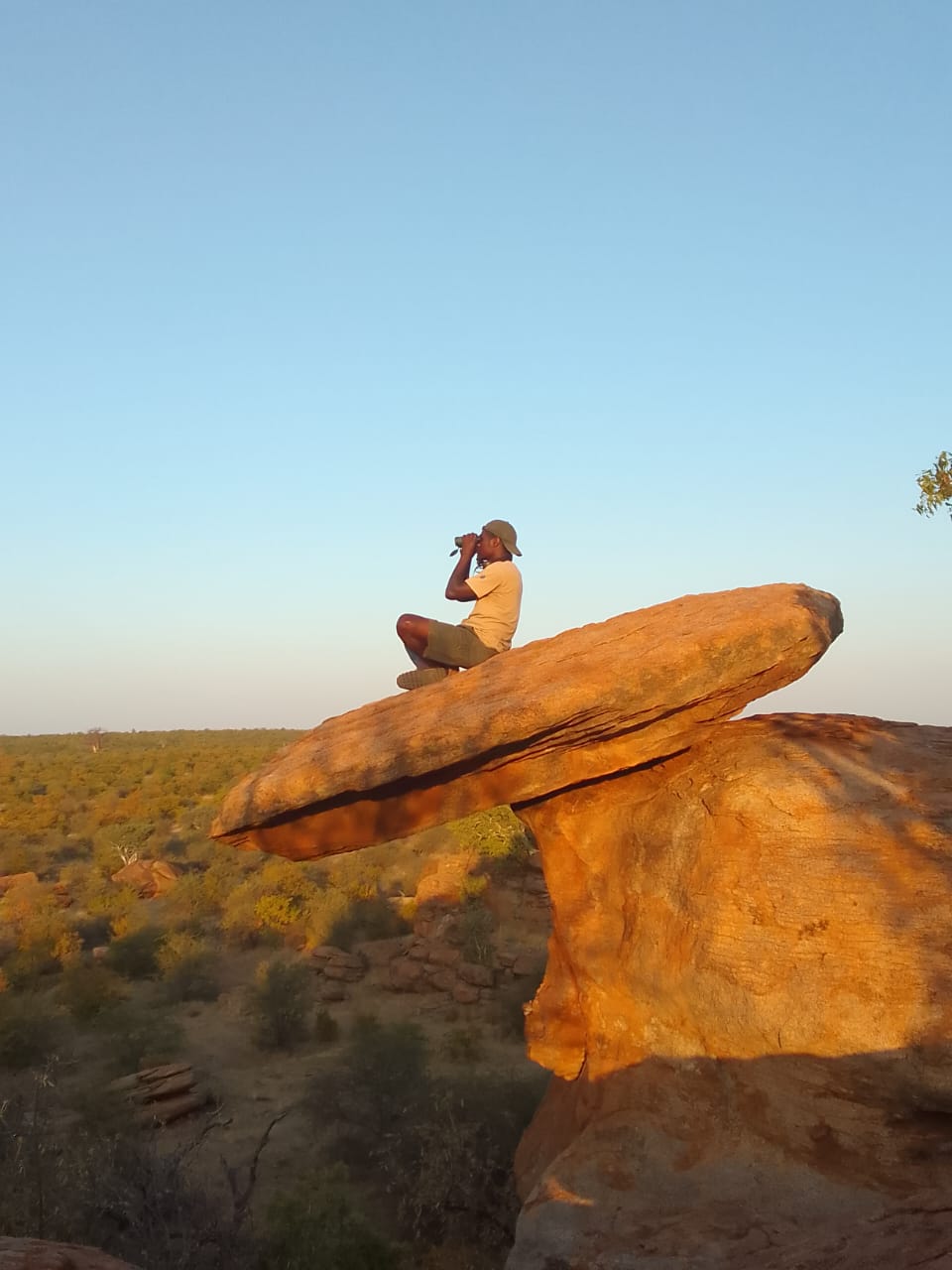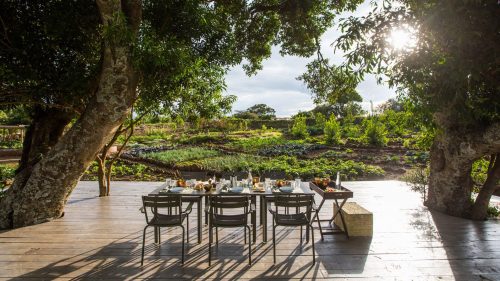
After completing my first round of guide training in South Africa, we said goodbye to the Kruger and headed to Mashatu Game Reserve in Botswana, to advance our training. Meaning ‘land of giants’, Mashatu gets its name from both the impressive native Nayala berry tree, otherwise known as Mashatu here, and the giants that freely roam its soils — the elephants are truly everywhere. In the weeks to follow, we would put our theory into practice as we took guests out on game drives and had to prove not only our ability to interact with guests but also showcase our knowledge of the fauna and flora.

As Shamba Keeper at Angama, I often interact with guests as I proudly take them through the rows of fruits and vegetables we grow for the lodge and politely introduce them to our chickens. But this was a completely different experience for me as I now had to guide a group of guests consisting of a mix of interests — a birder, a botanist, a photographer and a biologist all in the same vehicle. In addition to the wildlife, we used bush crafts and other methods to delight our guests — sipping tea in tin cups (Rooibos tea being the favourite choice) under the baobab trees, harvesting marula trees for their fruits and feasting on them atop the kopjes while watching the golden sunsets.
During my training, I was privileged to spend time with the legendary Graham Cooke, our trainer and author of My Life with Leopards, in tracking the elusive leopard. For two days, we tracked a young male and though we successfully followed his movements, we weren’t able to find him. There was one moment where we could feel him watching us — but never saw him. On the third day, as we were dejectedly returning to camp, he graced us with a slow walk across the road. You could really see the joy in our faces! To add to this incredible sighting, right above him some lanner falcons were mobbing a martial eagle — talk about courage and a feast for the eyes.
We camped along the river for a fortnight, pitching tents at the confluence of the mighty Limpopo and Shashe Rivers, historically known as the Tuli Enclave. This area is truly a birding paradise as it’s where Botswana, South Africa and Zimbabwe all converge. We would sit on the banks of the river and compete for the number of birds and calls we could spot and hear; it was a therapeutic experience. While we were lucky to record many birds, the jackpot was the rare Pel’s fishing owl.

Early mornings were a perfect time to study the tracks of water birds and to have a keen look into the platform nests up the tall trees, which always rewarded you with a raptor or two. We recorded a total of 476 birds in both South Africa and Botswana during our two months of training, the majority being seen during our daily two-hour walking safaris. I was overjoyed to see some of my all-time favourite birds: the jackal buzzard; pearl-spotted owlet; shikra (also known as a little banded goshawk) and the Wahlberg's eagle.
I also saw certain birds for the first time, such as the blue crane, the aforementioned jackal buzzard and Pel’s fishing owl as well as the lizard buzzard, all at different times of the day. After long walks, the silent waters of the Limpopo were tempting for a dive. However, Nile crocodiles showcased their might by generously displaying their number of teeth and armour. Somewhat undeterred, we occasionally played soccer on the sandy banks.

There were many experiences that were completely unique and unheard of for me, coming from the Mara. While Mashatu consists of plains like the Mara, it is vegetated with mopane trees spanning miles into the horizon. I learnt that these trees have cute leaves in the shape of butterflies and elephants love debarking them to feast on the juicy and nutrient-rich cambium layer. The butterfly leaves sometimes harbour mopane worms — a delicacy that goes well with pap (maize porridge, similar to Kenya’s ugali). The lush leaves of the mopane tree also provided a nifty trick for us — we chewed on them when we felt dehydrated.


Botswana’s landscapes are mind-blowing. The rocky hills, riverine forests, marshlands and the very majestic sandstone ridges make it one of the top photo stops in Africa. Mashatu shares unfenced borders with both the Mapungubwe and Tuli, making it animal-rich. But don't worry Angama readers, it wasn’t all work and no fun — we played Monopoly after brunch, volleyball in the middle of the wilderness and cracked jokes under the star-studded nights.
With special thanks to EcoTraining for their photographs and everything they did to make Jeremy's training so special.
Filed under: Inside Angama
Subscribe for Weekly Stories
Comments (0):

The Angama Shamba